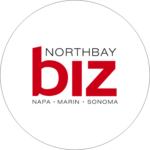Here’s what I commonly see: A business starts up with a single Windows computer and ultimately ends up bound to the entire Microsoft product line—Windows, Microsoft Office (Word, Excel, PowerPoint, Outlook), Exchange server (for e-mail, a calendar and an address book), Microsoft Server 2003 (the industrial strength version of Windows for servers), SQL Server 2005 (for databases) and so on—along with the upgrade cycle for each of these products (and the associated expense). For most companies, it’s the equivalent of using tactical nukes to swat flies.
I have no issues with Microsoft Word and Excel. I’m writing this column using Word on a Toshiba laptop. The nice thing is, I can e-mail it to my editrix and know she’ll be able to open it on her iMac using the Macintosh version of Word. It hasn’t always been so easy, but it sure is nice now that it works. Trading spreadsheets with Excel or presentations using PowerPoint is equally seamless these days. There are alternatives to the Office suite, but the stress of dealing with incompatibilities, both large and small, simply isn’t worth the cost (although the list price of Office Professional is $499, you can get it bundled with a new Dell computer for substantially less, and Amazon sells single copies for $380).
The problems all start when a business adds its second computer and faces the challenge of sharing files, calendars and contact information. There are at least two answers to this problem.
First, you can buy a copy of Microsoft Small Business Server, which includes both Windows Server 2003 and Exchange Server 2003 (for “collaboration”). This will cost about $600. You’ll also need a server to run it on (i.e., another computer to take care of), and it’ll introduce you to the wonderful world of CALs (Client Access Licenses). You must have a CAL for everyone who connects to the server.
Microsoft sells CALs in 5-packs and 20-packs. In either size pack, a CAL will cost about $100. So, between the server hardware and software, you’re going to spend about $2,000 for the privilege of sharing your calendar with your new assistant. Plus, someone’s going to have to install and take care of that new server for you. Oh, and don’t forget learning how to use it effectively.
Exchange students
A better alternative is to buy Exchange as a hosted service. In other words, rather than buy a server and software of your own, you pay a monthly fee to someone else. You’ll pay about $10 per user per month, and someone else has all the headaches (except for that little bit about learning how to use it effectively). If you’re a small business (less than 20 employees), this makes a lot of sense. If you’ve been avoiding the expense and complexity of your own Exchange server, you should definitely check out this alternative. Just Google “hosted Exchange server” for more information.
Even large companies realize running Exchange servers is hard work. There’s now a company called Azaleos (www.azaleos.com) that sells Exchange as an appliance. In other words, you get a box running Exchange server that’s designed to be low-maintenance and high-reliability. Just plug it into your network and voila! Of course, this is aimed at companies with hundreds of employees—and that’s probably not you.
Change your Outlook
Actually, the process of sucking your small business’ computing infrastructure into the maw of Microsoft began with that first computer running Microsoft Office. The real culprit is Outlook. If you install Microsoft Office, Outlook becomes the center of your life. You read and compose e-mail in Outlook. You enter calendar dates and contact information into Outlook. You’re investing in data that belongs to Outlook.
Now, when your business adds another person, you naturally want to share calendars and contacts. The only way to do this with Outlook is by adding Exchange (hosted or run-it-yourself) to the mix. On the other hand, it seems to work. Granted, it takes support personnel to set it up and keep it all running, which means added expense, but Outlook plus Exchange works pretty well.
Outlook is seductive because of its integration of e-mail, calendars and contacts, which is valuable if you collaborate with others. You can drag an e-mail message to the calendar to set up a meeting between all the recipients. You can schedule meetings, and e-mail invitations are automatically sent out, which then become appointments on the recipient’s calendar. Heady stuff—and it pays off in productivity. It’s nearly impossible to replicate that productivity boost when you use separate applications for your e-mail, calendar and address book. But I keep wondering if there’s a better way.
The search for more options
Google is moving in this direction—the newly released Google Calendar lets you share calendars and integrates with Gmail, Google’s Web-based e-mail system—but it still has a long way to go. The Open Source Applications Foundation (www.oasfoundation.org) has “Chandler,” intended as an open-source replacement for Outlook. While it looks promising, it’s still years away from being a credible option. 37signals (www.37signals.com) offers minimalist versions of collaboration programs, but they aren’t trying to compete directly with Outlook’s vast functionality. Still, you should check out its Backpack, Basecamp, Writeboard, Ta-da List and Campfire applications; they’re lovely little pieces of Web-based goodness.
I guess what irritates me about all this is that most small business owners aren’t told what they’re buying into when they decide they want to share calendars and contact information. Generally, they’re relying on the person who helped set up their systems, frequently a Microsoft Value Added Reseller (VAR), for advice. While these folks are conscientious and hardworking, they also have a somewhat-vested interest in selling the Microsoft product line. It probably costs small businesses more than it should.
Unfortunately, there aren’t any alternatives that don’t require an on-staff geek. And frankly, most small businesses don’t really care if Microsoft effectively makes all their computing infrastructure decisions for them—it’s just a cost of doing business. All of which makes me Mr. Crankypants. See you next month.
Author
-

Michael E. Duffy is a 70-year-old senior software engineer for Electronic Arts. He lives in Sonoma County and has been writing about technology and business for NorthBay biz since 2001.
View all posts



